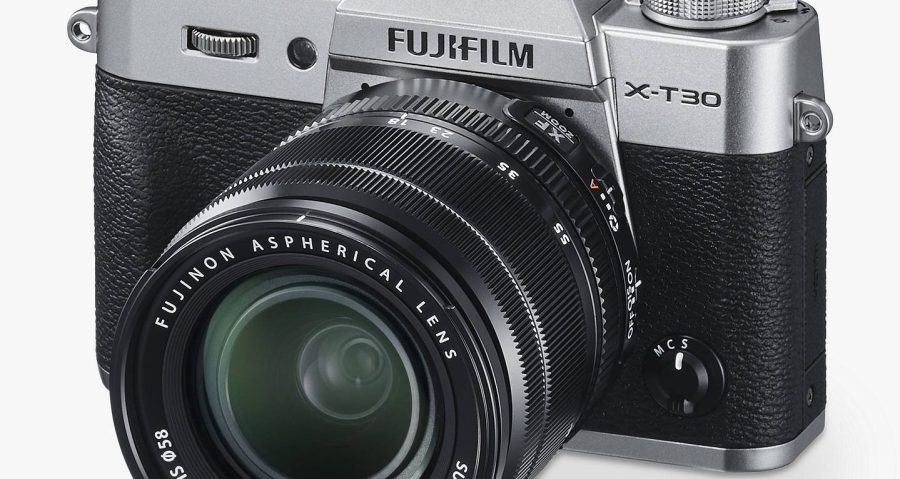Having tested a lot of cameras in 2019, we’ve certainly got our favourites. From those that packed great features into a small package, to those that simply blew us away, these are the best cameras released in 2019.
The best cameras of 2019
Canon PowerShot G7 X Mark III
● £699 ● www.canon.co.uk

Canon’s G7 X series of advanced compact cameras has long been popular with enthusiast photographers, and this latest version increases its attraction still further. Like its predecessors, it’s based around a 20MP, 1in sensor and a 24-100mm-equivalent f/1.8-2.8 lens that offers a really useful combination of range and light-gathering ability. Yet this fits inside a pocketable body with a good complement of external controls, along with a tilting touchscreen for composing your images.
In technical terms, the Mark III’s big update is the adoption of a stacked CMOS sensor and Canon’s latest Digic 8 processor. This brings much faster autofocus and continuous shooting, with a new Hi-speed Raw option that shoots at 30 frames per second. In addition, 4K video recording is available, supported by the addition of a microphone socket for better quality sound.
Canon has proven to be very adept at making small cameras that handle well, and the G7 X III follows suit with a nice tactile control ring around the lens, top-plate exposure-compensation dial and well-spaced buttons on the back. Most importantly, it also delivers very pleasing images. If you’d prefer to have a built-in viewfinder, along with a longer zoom in a slightly larger body, then also take a look at the G5 X Mark II, which costs £849. Overall, though, the G7 X Mark III is a lovely pocket camera that we really enjoyed using.
What we like
● Small, light and easily pocketable
● Excellent image quality
● Plenty of useful features
Recommended 4/5
Sony RX100 VII
● £1,199 ● www.sony.co.uk
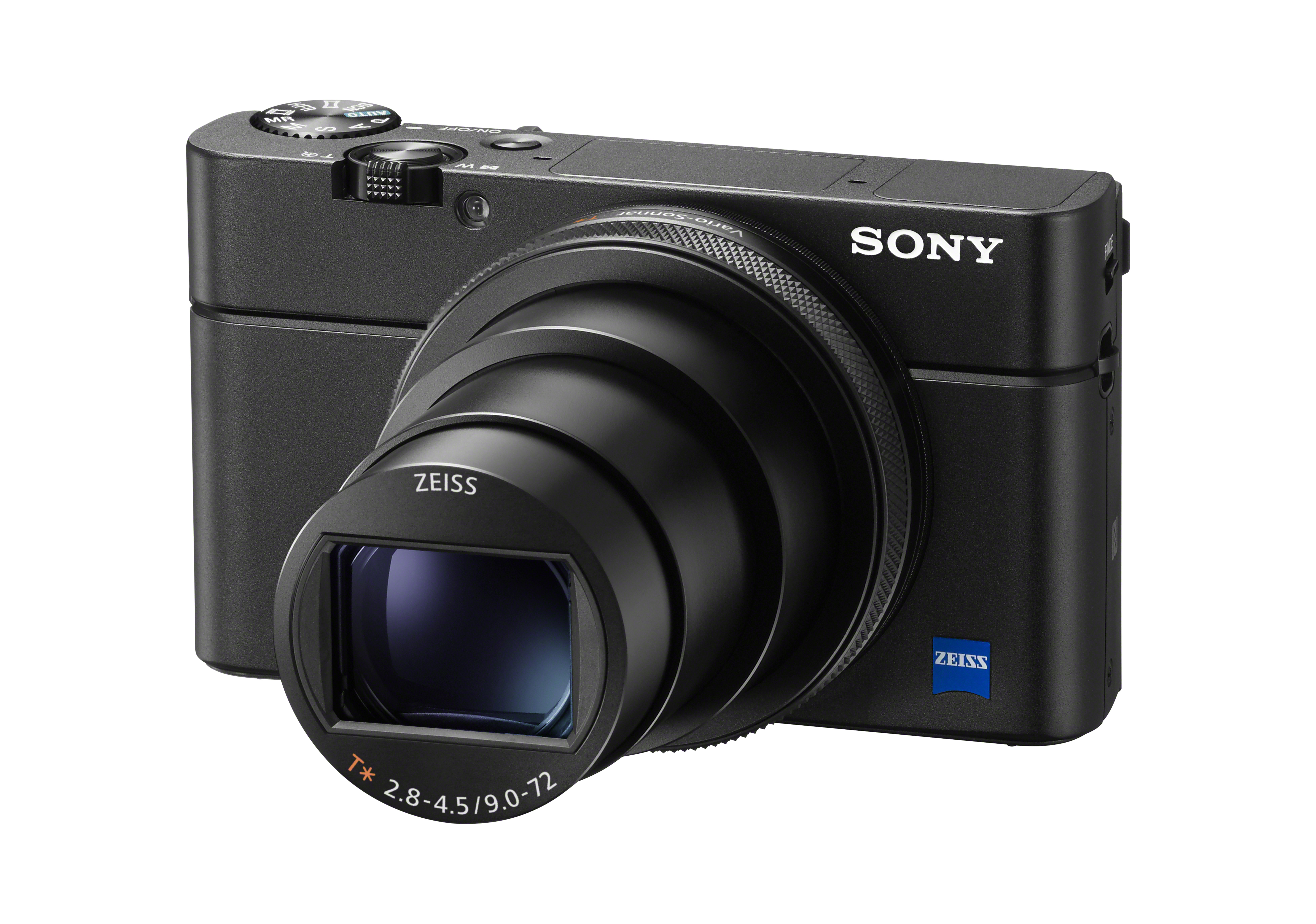
Sony’s RX100 series has been at the leading edge of compact-camera technology ever since the original model debuted in 2012. With the latest, seventh, edition the company has made the best pocket travel camera we’ve ever seen – at least for those who can stomach its stratospheric price.
As with last year’s RX100 VI, which is still on sale at a slightly more agreeable £979, this latest version pairs a 24-200mm-equivalent f/2.8-4 lens with a 20-million-pixel 1in-type sensor, in a body that will slip into a jacket pocket. It sports a pop-up electronic viewfinder and a tilting rear screen, which together provide excellent flexibility for composing your shots. Other handy features include 4K video recording and built-in Wi-Fi for transferring images to your phone.
The RX100 VII’s main update is that it gains Sony’s much-hyped Real-time Eye AF and Real-time Tracking technologies. Together with continuous shooting at up to 20 frames per second, this means it can keep up with fast, unpredictable situations that would defeat its rivals. It you want a small camera to photograph family or sports, for example, there’s nothing else quite like it. Equally, its excellent lens means it’s a fine choice for travel photography when you don’t want to carry heavy kit.
Our main criticism is that all the advanced features have rather outgrown the user interface, which was never that great to start with. So it’s best to consider the RX100 VII as a point and shoot – albeit an incredibly sophisticated one.
What we like
● Consistently sharp lens through the entire zoom range
● Remarkable autofocus system
● Handy pop-up viewfinder and tilting screen
Recommended 4.5/5
Canon EOS 250D
● £599 with 18-55mm IS lens ● www.canon.co.uk

This generously featured, easy-to-use entry-level DSLR has plenty going for it. Its compact, lightweight body makes it one of the smallest DSLRs on the market, and indeed barely bigger than many mirrorless models. Despite this, it manages to accommodate both a comfortable handgrip and a useful range of external controls, complemented by a fully articulated touchscreen that can be set at almost any angle for creative photography, selfies or vlogging.
The EOS 250D is equipped with a good range of novice-friendly options – including its built-in Guided Mode – and beyond this there’s plenty to grow into for more advanced photography. Notable features include in-camera editing for both JPEG and raw files, along with Canon’s particularly well-implemented Bluetooth and Wi-Fi connectivity for pairing the camera with your smartphone, which allows you to share images and control the camera remotely. Our only real gripe is the nine-point AF system, which feels a bit dated, but thankfully this is offset by the excellent AF performance when used in live view mode.
Overall image quality is very good, delivering vibrant colours and easily enough fine detail to make large prints. Battery life trounces any mirrorless camera, at over 1,000 shots per charge, although you’ll get a lot less than that if you frequently to shoot in live view. For beginners, this is a fantastic little camera that is worth the premium over Canon’s cheaper entry-level models.
What we like
● Excellent image quality
● Generously featured
● Exceptionally small and lightweight
Recommended 4/5
Canon EOS 90D
● £1,209 (body only) ● www.canon.co.uk

In an age where every new camera seems to be mirrorless, it was intriguing to see Canon launch a new DSLR in August. The firm clearly believes there are photographers who still value an optical viewfinder, and with the EOS 90D, it has made a very capable DSLR for enthusiasts. It shares its new 32.5MP CMOS sensor with the Canon EOS M6 Mark II, producing the highest resolution of any APS-C DSLR on the market. Great for wildlife and sports photographers who crop tightly into images and want to preserve fine detail, it backs this up with 10fps shooting with autofocus tracking when using the viewfinder. The buffer performance doesn’t outclass the EOS 7D Mark II, but being able to shoot 40 frames at 10fps in the C-Raw format is very respectable.
Adding a joystick at the rear to shift the AF point intuitively around the frame is very well received; as is the option to shoot at up to 1/16,000sec by entering live view and activating the electronic shutter. Additional functionality in live view, such as having 5,481 AF positions to choose from and being able to activate face and eye detection makes it well suited to a multitude of different shooting situations.
The AF system is starting to show its age a little and the EOS 90D doesn’t support in-camera battery charging, but if you want a DSLR that handles superbly with larger lenses, offers weather resistance, produces beautifully rich images and is a pleasure to use, the EOS 90D should be considered. It’s one of the best DSLRs we’ve tested in many years.
What we like
● Re-introduces multi-controller joystick
● Excellent 1,300-shot battery life
● Impressive image quality and dynamic range
Recommended 4/5
Fujifilm X-T30
● £849 (body only) ● www.fujifilm.eu/uk
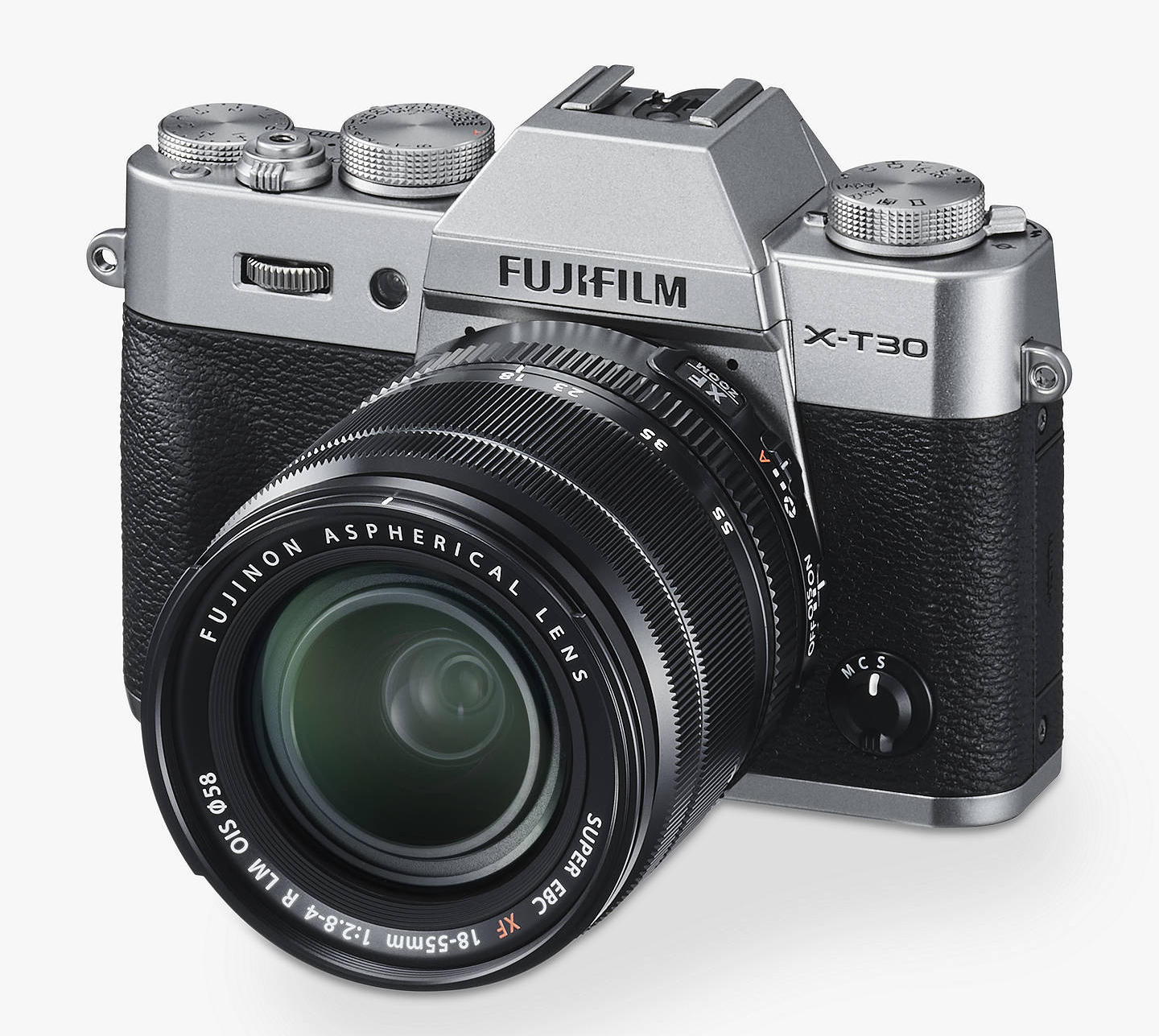
This so-called ‘little giant’ shares a lot of its innards, including its 26.1MP APS-C X-Trans CMOS 4 sensor, with Fujifilm’s high-end X-T3, but has the advantage of being that bit smaller, lighter and more affordable. The handgrip isn’t as muscular as the X-T3’s, and you don’t get premium features such as twin card slots for back-up purposes, weather sealing or the option to add a battery grip, but in all other respects it’s a cracking little camera for times when you’d like to travel light and want to be able to change lenses.
It’ll shoot at up to 30fps (with a 1.25x crop), puts in a commendable performance in low light up to ISO 6400 and provides a joystick under your thumb – something that was absent on both the X-T10 and X-T20.
Better still, the low-light autofocus sensitivity has improved significantly and it’s possible to create your own custom AF-C presets for moving subjects. Although the EVF is no different to the X-T20’s, it displays a clear view and has a fast refresh rate of 100fps in high-performance boost mode. Those who dabble with video will also appreciate its ability to shoot 4K/30p footage with support for F-Log recording and 4:2:2 10bit output via HDMI.
The X-T30 is one of our favourite small mirrorless cameras, and it includes a lot of what we love about the X-T3 in an even more compact package. The £400 saving you can make if buying it over the X-T3 could also be put towards an extra lens.
What we like
● Excellent form factor
● Beautiful styling
● Supported by a superb range
of XF lenses
Recommended 5/5
Panasonic G90
● £899 (body only) ● www.panasonic.com/uk
 The G90 builds on everything we liked about the G80 while inheriting quite a few features we first saw introduced on its high-end cousin, the Lumix G9. For your money, you get a great-handling, lightweight body that features weather seals and a magnesium-alloy front plate in its construction for durability.
The G90 builds on everything we liked about the G80 while inheriting quite a few features we first saw introduced on its high-end cousin, the Lumix G9. For your money, you get a great-handling, lightweight body that features weather seals and a magnesium-alloy front plate in its construction for durability.
It’s equipped with a 20.3MP Four Thirds sensor that outputs punchy images and the chip is mounted to a five-axis Dual IS II image stabiliser, which offers up to five stops of compensation
with any lens, including legacy lenses mounted via converters. It is also possible to extract 8MP stills from 4K-movie footage captured at 30fps.
A rather useful addition for those who like to shoot at night is the camera’s live view composite mode, which allows users to track the movement of stars against a pitch-black night sky.
Other features worthy of note include a microphone jack for high-quality audio recording, as well as a headphone socket for live audio monitoring. Hasty focusing in favourable lighting conditions, excellent connectivity options with Panasonic’s Image App and a good low-light performance at up to ISO 3200 round off a really appealing set of features.
Whether it’s being used for family portraits, or more challenging fast-paced action sequences, the G90 is rarely found to be out of its depth. Our only qualms are that it lacks a battery percentage indicator, and that a few buttons and controls feel a little plasticky.
What we like
● Brilliantly sculpted handgrip
● Highly effective in-body image stabilisation
● Features weather seals for long-lasting durability
Recommended 4.5/5
Nikon Z 50
● £849 (body only) ● www.nikon.co.uk

Although we’re yet to review the Z 50, we’ve spent more than enough time with it to know Nikon is on to something with its first DX-format mirrorless camera. Considerably smaller, lighter and less expensive than the Z 6 and Z 7, the Z 50 maintains much the same styling and superb handling characteristics of these full-frame models, while combining a Nikon D7500-like feature set with usability closer to that of the advanced entry-level D5600.
The absence of IBIS is a key talking point. However, we’re told the Z 50 couldn’t have been made as small or light if it had been included. Instead, optical stabilisation is built into Nikon’s new DX-format Z-mount lenses.
Its comprehensive spec includes a 20.9MP APS-C CMOS sensor that’s closely related to the one used inside Nikon’s D500 and D7500 DSLRs, while its ability to shoot a burst at 11fps with full AF-AE tracking makes it Nikon’s fastest enthusiast camera to date. There’s plenty more we’re keen to try over prolonged use – its permanent touch buttons at the side of its tilting touchscreen being one such example.
Above the screen, it has a 2.36-million-dot EVF and it accepts SD cards beside its battery. This lasts for 300 shots and supports USB charging via a Micro USB port.
With no joystick, it operates similarly to Nikon’s entry-level DSLRs in the way the d-pad is used to shift the AF point, with front and rear dials falling nicely to hand for intuitive control when using the PASM modes.
While it’s still early days for Nikon’s Z-series, this first DX-format addition, along with the arrival of a pair of new DX-format Z-mount lenses, looks very promising. Watch this space for our full review.
What we like
● Excellent handling for such a small camera
● ‘i’ button loads frequently used settings
● Accepts all Z-mount lenses
Olympus OM-D E-M5 Mark III
● £1,099.99 (body only) ● www.olympus.co.uk
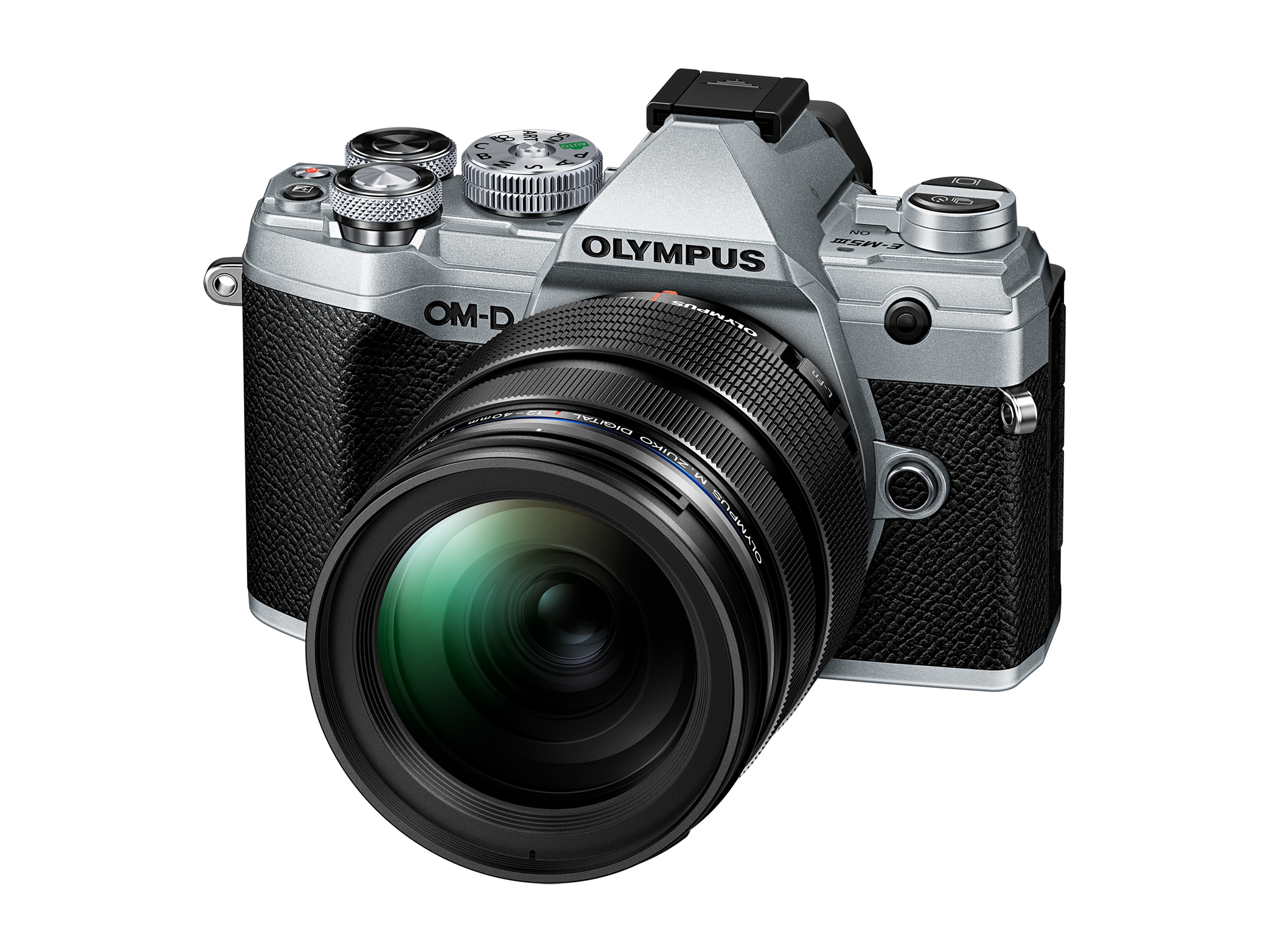
Olympus’s original OM-D E-M5 introduced the concept of a small, fully featured and weather-sealed mirrorless camera aimed at enthusiast photographers. This latest update retains the core characteristics that have made the range so appealing, with a petite body measuring just 125x85x50mm that still finds space for a large complement of external controls. But the Mark III brings the line up to date, with key features borrowed from the flagship OM-D E-M1 Mark II, most notably the same 20MP sensor that includes on-chip phase detection for radically superior autofocus, along with 4K video recording.
Perhaps the biggest practical improvement that users will notice straight away is the new AF system, which promises continuous shooting with focus tracking at up to 10 frames per second. The class-leading five-axis in-body stabilisation system has also been uprated to offer 5.5 stops benefit. A revised and improved control layout, including dedicated buttons for ISO and exposure compensation, gives an excellent shooting experience straight out of the box. The electronic viewfinder is large and clear, while the fully articulated touchscreen provides excellent flexibility for shooting at unusual angles.
There’s plenty here to induce existing E-M5 II owners to update, including conveniences such as Bluetooth connectivity and in-camera USB battery charging. Meanwhile, for those looking to buy into mirrorless for the first time, the E-M5 III offers a combination of compact size, light weight, high-end handling and rugged build that you’ll struggle to find elsewhere.
What we like
● Excellent handling
● Small and lightweight
● Robust construction
Nikon Z 6
● £1,499 (body only) ● www.nikon.co.uk

Identical in terms of ergonomics and design to its high-resolution cousin the Z 7, the Z 6 is Nikon’s first attempt at an affordable, general-purpose full-frame mirrorless model.
Behind its large-diameter Z-mount there’s a 24.5MP back-illuminated full-frame sensor that provides a sensitivity range of ISO 50-204,800. The hybrid autofocus system combines contrast and phase detection across 90% of the sensor, and there’s silent shooting as well as 4K recording at up to 30fps using the full width of the sensor. Pair the Z 6 with an F-mount lens with VR via the FTZ adapter and you’ll discover the in-body and in-lens image-stablisation systems work together very effectively. We got sharp handheld images right down to 1/5sec at 70mm.
Nikon DSLR users will be bowled over by the viewing experience of the large electronic viewfinder and how well the touchscreen integrates with the menu. With its well-sculpted handgrip offering one of the best handling experiences of any full-frame mirrorless camera, the Z 6 is also extremely comfortable to use over long spells of shooting. Things we’re not so fond of are its single XQD card slot and the 310-shot battery life. The good news is that an MB-N10 battery grip (£179) is on its way.
The Z 6 is an astonishingly impressive camera and represents even better value for money now than when it was launched, having dropped to £1,499 (body only) or £1,549 with the FTZ adapter included.
What we like
● Weather-sealed to Nikon D850 standards
● Brilliantly executed design
● Compatibility with F-mount lenses via FTZ adapter
Recommended 5/5
Panasonic Lumix S1
● £2,199 (body only) ● www.panasonic.com/uk

Panasonic’s take on full-frame mirrorless is a large, beefy camera based around the Leica L mount. The 24MP Lumix S1 is, like its high-resolution 47.3MP sibling the S1R, similar in size and weight to a full-frame DSLR, with a tough, weather-sealed body that’s festooned with a vast array of external controls. The result is arguably the most ‘professional’ design of any of the current generation of mirrorless cameras, exemplified by its large, comfortable handgrip and illuminated rear buttons.
Notable features include an autofocus system that can be set to identify and track humans or animals. The five-axis in-body stabilisation system is impressively effective, and works in concert with optically stabilised lenses for even greater effect. The S1 also benefits the most practical high-resolution multi-shot mode we’ve yet seen, which delivers artefact-free 96MP images.
If there’s one aspect where the S1 trounces its rivals, it’s in composing and viewing images. The sensational 5.76m-dot OLED viewfinder is the best we’ve seen, with an impressively large and detailed view including comprehensive shooting information. It’s perfectly complemented by the tilting rear touchscreen, which can be used for waist-level shooting in both portrait and landscape formats.
Image quality is every bit as good as its 24MP full-frame peers, particularly in raw. Thanks to the alliance formed between Leica, Panasonic and Sigma, users also gain access to a strong range of extremely high-quality lenses. If you can live with the size, weight and cost, the S1 is an extremely accomplished camera.
What we like
● Superb viewfinder and screen
● Well-designed control layout
● Comprehensive feature set
Recommended 4.5/5
Sony Alpha 7R IV
● £3,599 (body only) ● www.sony.co.uk
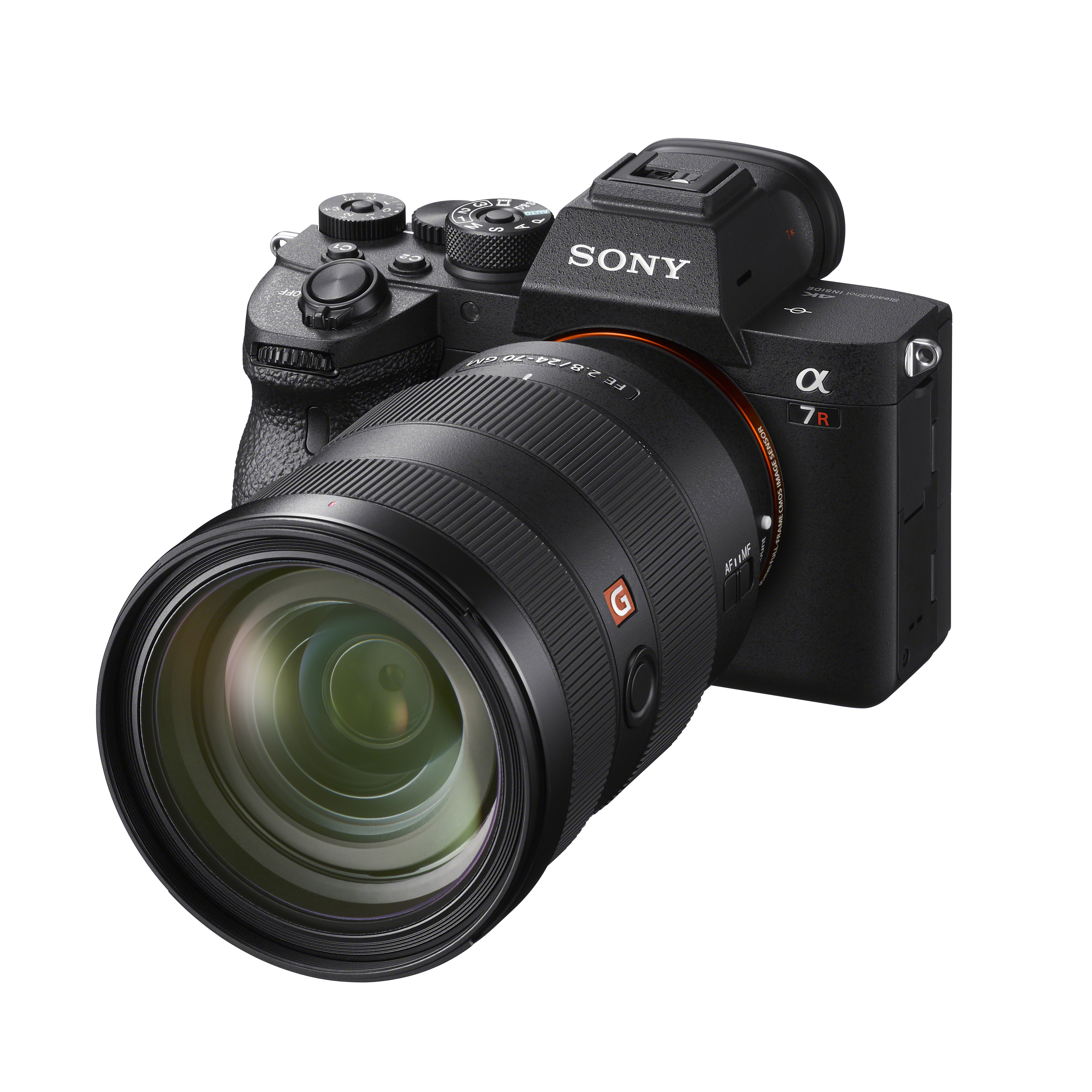
There’s no denying that £3,500 is a huge sum of money to spend, but the Sony Alpha 7R IV is a very special camera indeed. It’s the new master of resolution in the full-frame market, boasting a 61MP sensor that delivers 15 stops of dynamic range and puts in an admirable performance in low light. The way it rattles out a continuous burst at 10fps and lets you shoot in APS-C mode from a touch of a button is especially good for shooting sport, action and wildlife – something that’s not usually associated with high-resolution cameras.
Sony’s Artificial Intelligence (AI) subject-recognition technology has evolved, with face and eye detection both available when shooting stills or 4K video. Animal Eye AF is incredibly responsive for shooting wildlife on safari or pets at home, and a number of improvements to its grip and ergonomics have resulted in a more assured feel than previous generations when it’s coupled to large and heavy telephoto lenses. Its 5.76-million-dot UXGA OLED electronic viewfinder, improved focus point colour and more durable port covers are worthy of a mention, too.
Though it’s a sensational camera, there are areas for improvement. We’d like to see Sony develop sensible compression for raw files, and bring its touchscreen functionality and convoluted menu system up to scratch.
The A7R IV will be overkill for amateurs, but it’ll satisfy many enthusiasts and professionals in equal measure. It crams a huge amount into its compact body, but ultimately it’s all about the phenomenal detail and quality of the images it produces.
What we like
● Resolves mind-blowing detail
● Incredibly fast and responsive AF
● Improved ergonomics and handling
Recommended 5/5
Fujifilm GFX100
● £9,999 (body-only) ● www.fujifilm.eu/uk
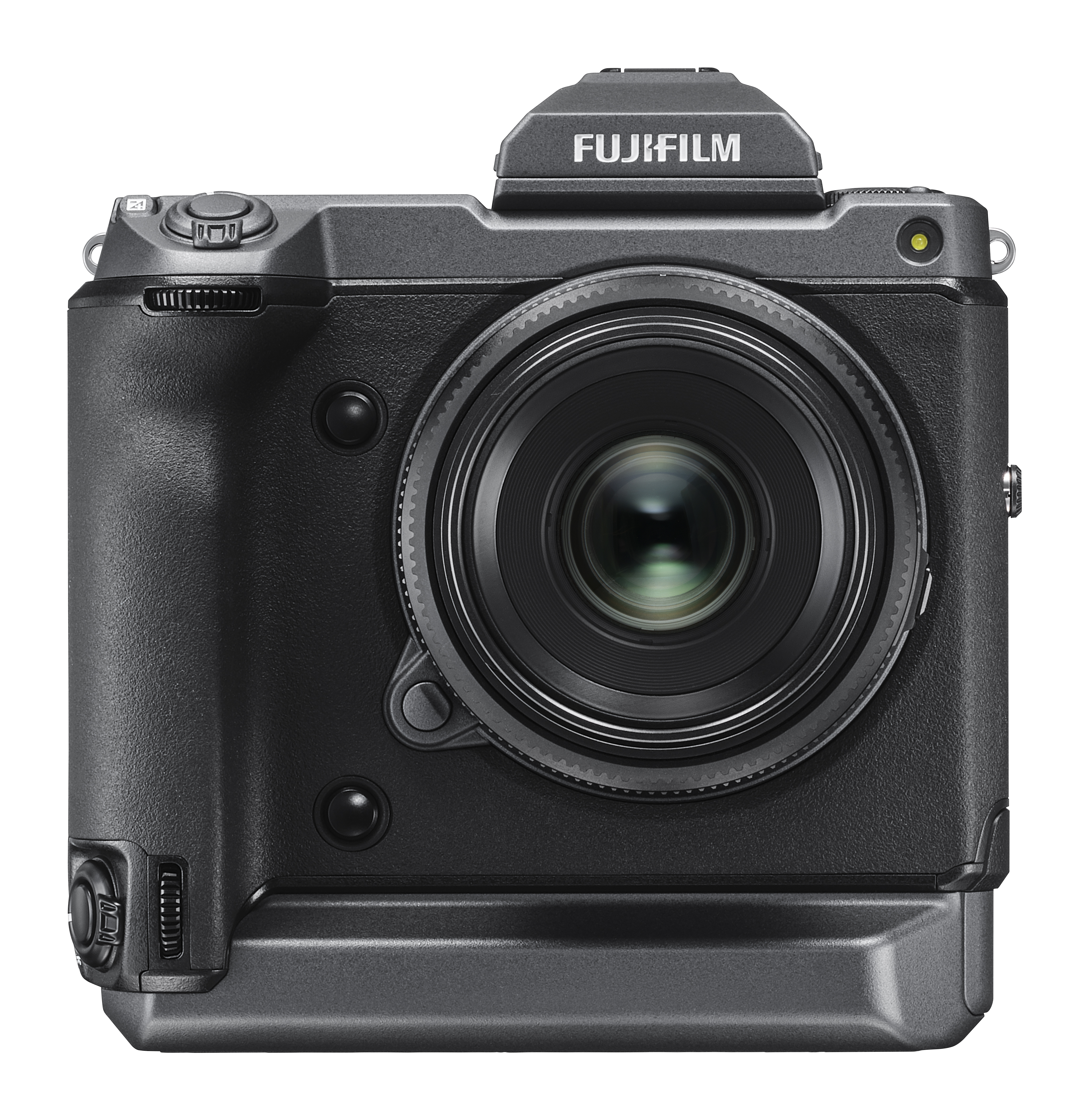
If money’s no object and you want the very best camera available, Fujifilm’s extraordinary GFX100 makes a considerable case for itself. Built around a 102-million-pixel 44x33mm medium-format sensor, it offers sensational image quality that’s only surpassed by much more expensive models. But thanks to its phase-detection autofocus, in-body stabilisation and relatively compact design, it’s far more practical for taking out into the field than any other ultra-high-resolution camera.
Image quality is simply sensational, with the sensor recording outrageous levels of detail and phenomenal dynamic range, supported by Fujifilm’s range of awesome GF lenses. Indeed, the GFX100 comprehensively outperforms any other camera we’ve tested to date. When shooting JPEGs, users will benefit from the firm’s unrivalled set of attractive Film Simulation settings.
Pro-level features include dual card slots, two batteries offering 800 shots stamina, plus dust-, water- and freeze-proof construction. The huge, high-resolution electronic viewfinder can be fitted with a hinged adapter for low-angle shooting, or removed completely for tripod work using the three-way tilting touchscreen.
This is a niche camera for sure, but for photographers craving the maximum possible detail without sacrificing mobility, it’s an absolute revelation, and a landscape shooter’s dream. For those interested in the advantages of medium format but on a smaller budget, we’d recommend taking a look at the 50MP GFX 50R (£3,450).
What we like
● Absolutely superlative image quality, both in JPEG and raw
● Superb viewfinder and screen
● In-body stabilisation allows practical handheld shooting
Recommended 4.5/5

